 W
WPrayer is an invocation or act that seeks to activate a rapport with an object of worship through deliberate communication. In the narrow sense, the term refers to an act of supplication or intercession directed towards a deity or a deified ancestor. More generally, prayer can also have the purpose of thanksgiving or praise, and in comparative religion is closely associated with more abstract forms of meditation and with charms or spells.
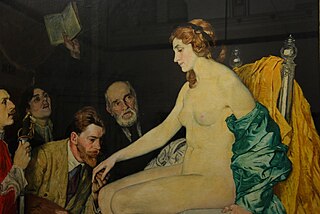 W
WAdoration is respect, reverence, strong admiration, or love in a certain person, place, or thing. The term comes from the Latin adōrātiō, meaning "to give homage or worship to someone or something".
 W
WAhlquist v. Cranston, 840 F. Supp. 2d 507, was a case where the United States District Court for the District of Rhode Island ruled that a "School Prayer" banner posted in Cranston High School West was a violation of the Establishment Clause of the United States Constitution and ordered its removal. The suit was brought by Mark Ahlquist on behalf of his minor daughter Jessica Ahlquist, a student at the school, with the assistance of the American Civil Liberties Union.
 W
WA daily devotional is a Christian religious publication that provide a specific spiritual reading for each calendar day. Many daily devotionals take the form of one year devotional books, with many being tailored specifically for children, teenagers, students, men and women. Examples of daily devotional booklets include The Upper Room, Our Daily Bread, and The Word Among Us.
 W
WThe Dances of Universal Peace (DUP) are a spiritual practice that employs singing and dancing the sacred phrases of the world's religions. Their intention is to raise consciousness and promote peace between diverse religions according to one stated goal. The DUP are of North American Sufic origin. They combine chants from many world faiths with dancing, whirling, and a variety of movement with singing.
 W
WThe efficacy of prayer has been studied since at least 1872, generally through experiments to determine whether prayer or intercessory prayer has a measurable effect on the health of the person for whom prayer is offered. Empirical research indicates that prayer and intercessory prayer have no discernible effects.
 W
WEma are small wooden plaques, common to Japan, in which Shinto and Buddhist worshippers write prayers or wishes. The ema are left hanging up at the shrine, where the kami are believed to receive them. Typically 15 cm wide and 9 cm high, they often carry images or are shaped like animals, or symbols from the zodiac, Shinto, or the particular shrine or temple. In ancient times people would donate horses to the shrines for good favor; over time this was transferred to a wooden plaque with a picture of a horse, and later still to the various wooden plaques sold today for the same purpose. Once inscribed with a wish, Ema are hung at the shrine until they are ritually burned at special events, symbolic of the liberation of the wish from the writer.
 W
WGrace is a photograph by Eric Enstrom. It depicts an elderly man with hands folded, saying a prayer over a table with a simple meal. In 2002, an act of the Minnesota State Legislature established it as the state photograph.
 W
WA grace is a short prayer or thankful phrase said before or after eating. The term most commonly refers to Christian traditions. Some traditions hold that grace and thanksgiving imparts a blessing which sanctifies the meal. In English, reciting such a prayer is sometimes referred to as "saying grace". The term comes from the Ecclesiastical Latin phrase gratiarum actio, "act of thanks." Theologically, the act of saying grace is derived from the Bible, in which Jesus and Saint Paul pray before meals. The practice reflects the belief that humans should thank God who is the origin of everything.
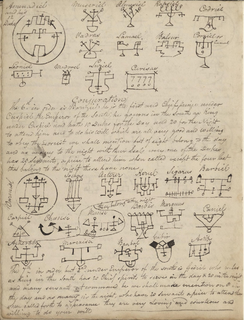 W
WAn incantation, a spell, a charm, an enchantment or a bewitchery, is a magical formula intended to trigger a magical effect on a person or objects. The formula can be spoken, sung or chanted. An incantation can also be performed during ceremonial rituals or prayers. In the world of magic, wizards, witches, and fairies allegedly perform incantations.
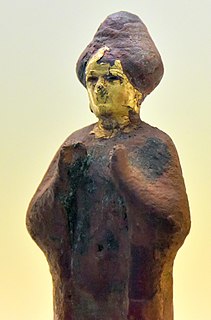 W
WIntercession or intercessory prayer is the act of praying to a deity or to a saint in heaven on behalf of oneself or others.
 W
WThe International Order of Saint Luke is an inter-denominational religious order dedicated to the Christian healing ministry. It began in 1932 as the Fellowship of St. Luke, and was founded by John Gaynor Banks, an Episcopal priest.
 W
WAn invocation may take the form of:
 W
WThe Local Government Act 2015 is an Act of the Parliament of the United Kingdom passed in 2015. It was created to affirm the rights of local councils to hold prayers before council and committee meetings.
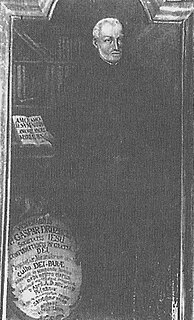 W
WMancipium Mariae – a Christian devotion.
 W
WThe Mantram Handbook describes methods of using a mantram — sometimes called a Holy Name — in daily living. Benefits are also described. Written by Eknath Easwaran, the book was originally published in the United States in 1977. Several subsequent editions have been published, sometimes under different titles, in the United States, the United Kingdom, and India. Foreign (non-English) editions have also been published in several languages. The book has been reviewed in newspapers, magazines, and websites, and discussed in professional journals. It has also been a focus of scientific research. The subtitle of the fifth (2008) US edition is: a practical guide to choosing your mantram & calming your mind.
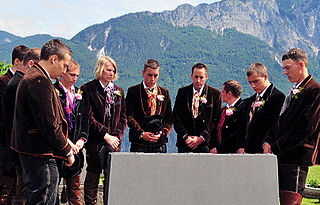 W
WA moment of silence is a period of silent contemplation, prayer, reflection, or meditation. Similar to flying a flag at half-mast, a moment of silence is often a gesture of respect, particularly in mourning for those who have died recently, or as part of a tragic historical event, such as the September 11 attacks of 2001.
 W
WThe Parable of the friend at night is a parable of Jesus which appears in Luke 11:5–8. In it, a friend eventually agrees to help his neighbor due to his persistent demands rather than because they are friends, despite the late hour and the inconvenience of it.
 W
WThe Parable of the Unjust Judge (also known as the Parable of the Importunate Widow or the Parable of the Persistent Woman, is one of the parables of Jesus which appears in the Gospel of Luke. In it, a judge who lacks compassion is repeatedly approached by a woman seeking justice. Initially rejecting her demands, he eventually honors her request so he will not be worn out by her persistence.
 W
WThe Philokalia is "a collection of texts written between the 4th and 15th centuries by spiritual masters" of the Eastern Orthodox Church mystical hesychast tradition. They were originally written for the guidance and instruction of monks in "the practice of the contemplative life". The collection was compiled in the 18th century by Nicodemus the Hagiorite and Macarius of Corinth based on the codices 472, 605, 476, 628 and 629 from the library of monastery of Vatopedi, Mount Athos.
 W
WPrayer in the Hebrew Bible is an evolving means of interacting with God, most frequently through a spontaneous, individual, unorganized form of petitioning and/or thanking. Standardized prayer such as is done today is non-existent. However, beginning in Deuteronomy, the Bible lays the groundwork for organized prayer including basic liturgical guidelines, and by the Bible's later books, prayer has evolved to a more standardized form, although still radically different from the form practiced by modern Jews.
 W
WA prayer meeting is a group of lay people getting together for the purpose of prayer as a group. Prayer meetings are typically conducted outside regular services by one or more members of the clergy or other forms of religious leadership, but they may also be initiated by decision of non-leadership members as well.
 W
WA prayer rug or prayer mat is a piece of fabric, sometimes a pile carpet, used by Muslims and some Christians during prayer.
 W
WChristian diet programs are books and other name-brand products promoting weight-loss diets and other diets that the authors believe are consistent with Christian rules and values. They may borrow elements from Jewish dietary laws, the Bible, modern nutrition science, or other sources. Christian diet and exercise programs became popular in the 1970s. They differ from historical, non-commercial Christian dietary traditions, such as not eating meat on Fridays.
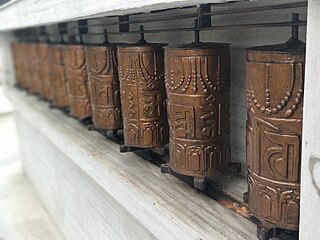 W
WA prayer wheel is a cylindrical wheel on a spindle made from metal, wood, stone, leather or coarse cotton.
 W
WProstration is the placement of the body in a reverentially or submissively prone position as a gesture. Typically prostration is distinguished from the lesser acts of bowing or kneeling by involving a part of the body above the knee touching the ground, especially the hands.
 W
WSalah, also known as namāz and also spelled salat, are prayers performed by Muslims. Facing the qibla, the direction of the Kaaba with respect to those praying, Muslims pray first standing and later kneeling or sitting on the ground, reciting from the Quran and glorifying and praising Allah as they bow and prostrate themselves in between. Salah is composed of prescribed repetitive cycles of bows and prostrations, called rakat. The number of rak'ahs, also known as units of prayer, varies from prayer to prayer. Ritual purity and wudu are prerequisites for performing the prayers.
 W
WPrayer is used in Scouting worldwide, following the belief of its founder, Robert Baden-Powell, that "a scout is reverent." When creating the Scouting concept, Baden-Powell was adamant that there was a place for God within it. In Scouting for Boys, Baden-Powell wrote: We aim for the practice of Christianity in their everyday life and dealings, and not merely the profession of theology on Sundays…
 W
WThe phrase "thoughts and prayers" is often used by officials and celebrities in the United States as a condolence after a tragic event, such as a deadly natural disaster or mass shooting. The phrase has received criticism for its repeated usage in the context of gun violence or terrorism, with critics claiming "thoughts and prayers" are offered as substitutes for action such as gun control or counter-terrorism.
 W
WA wake is a social gathering associated with death, usually held before a funeral. Traditionally, a wake takes place in the house of the deceased with the body present; however, modern wakes are often performed at a funeral home or another convenient location. A wake is also sometimes held in place of a funeral as a social celebration of the person's life. In the United States and Canada it is synonymous with a viewing. It is often a social rite that highlights the idea that the loss is one of a social group and affects that group as a whole. In the United Kingdom and some other parts of the Commonwealth, where it is not customary to have a public viewing ceremony before the funeral, the term is sometimes used for a gathering held after the funeral.
 W
WThe Wilderness Grace, also known as the "Worth Ranch Grace" and the "Philmont Grace", is the common name of a simple prayer recited before meals by many boy and girl members of the Boy Scouts of America. The original version, the "Worth Ranch Grace", was written in 1929 by A. J. "Jerry" Fulkerson, Camp Director at Worth Ranch Scout Camp in Palo Pinto County, Texas, part of the Longhorn Council in the Fort Worth Area. Fulkerson was also the Scout executive of the Fort Worth Area Council, Boy Scouts of America.
Zoroastrian prayer is performed for the worship of Ahura Mazda. The Zoroastrian place of worship is known as a fire temple.